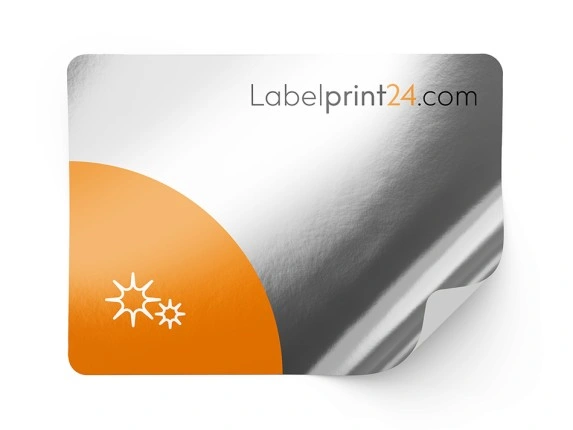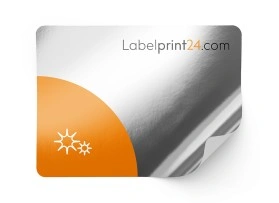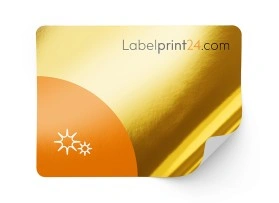- Products
- Service & Help
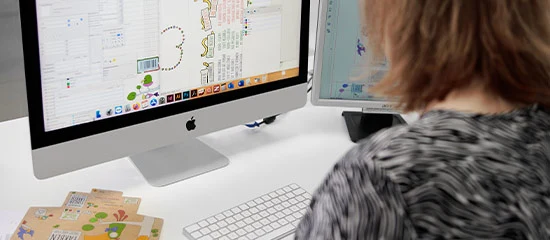 Our printing experts will be happy to help you with any questions you may have about your order. Simply use our customer support.SupportNewsletter
Our printing experts will be happy to help you with any questions you may have about your order. Simply use our customer support.SupportNewsletter - About us
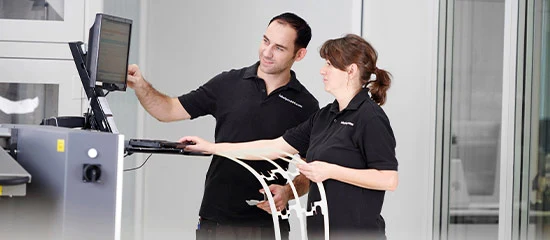 Our printing experts will be happy to help you with any questions you may have about your order. Simply use our customer support.SupportNewsletter
Our printing experts will be happy to help you with any questions you may have about your order. Simply use our customer support.SupportNewsletter - Contact us
- Key Clients
Metallic label
Are you looking for a label that has excellent barrier and adhesive properties? A refined label that is resistant and has a metallic shine? Order Metallised labels from Labelprint24.com!
- Ideal as product labels, food labels and decorative labels
- Paper labels with glossy effect in gold and silver
- With warning triangle configurable in many variants
Discover more labels of Labelprint24.com!
- Production TimeFrom 48hr
- MaterialFilm / Paper
- Size100% customizable
- Finish OptionsFilm finishing / Laminate
Select kind of product

Product Advisor for Labels
Whether it’s a simple roll label or a multi-layered specialty label – I’m your go-to person for questions concerning materials, adhesion, and finishing of labels for the pharmaceutical, cosmetic, food, chemical, and almost any other industry.
"Paper or film? We've got the perfect label!"
I will be happy to help you personally.
Metallic labels on the roll
What are metallic labels?
Metallic labels are adhesive labels which have a very thin metal layer on their surface. This metal layer is created by vapour-depositing aluminium or another metal in a vacuum process. Metallised labels can be recognised visually by their metallic look. They are available as printed or unprinted labels. During production, the labels are mainly supplied on label rolls. They are also available in smaller quantities as practical sheets for manual application.
Like all self-adhesive labels, metallised labels consist of several layers of material. These layers include the face material made of metallised paper or metallised label film, the adhesive underneath, the release liner made of silicone and the backing paper.
The properties that metallised labels must possess in detail depend on whether the stickers are used indoors or outdoors, on the respective intended use and the nature of the surface of the products or objects to be labelled.
The very special thing about metallised labels is that they have excellent barrier properties. These barrier properties are due to the metal layer on the surface. The metal is an impermeable barrier to water, fats, oils, chemicals, fuels, solvents and steam. But not only that: the metal surface reflects light, heat and UV radiation and is also characterised by its high resistance to strong abrasion.
Typical areas of application
Metallised labels are used mainly for three considerations:
The first reason is the resistance described above. It predestines Metal-Label for the marking of particularly difficult conditions, as they are common in industry or in the outdoor sector.
The second reason for using metallised labels is their metallic sheen. It is a particularly attractive visual effect. This effect is available in a wide range of variants: aluminium, silver, gold, copper, bronze, etc. Therefore, metallised labels are an ideal way to combine protection and barrier functions with an attractive appearance.
The third reason why metal labels are often used is their suitability as security labels. They can be used to create eye-catching hologram effects or VOID lettering.
Examples of typical industry applications
Examples of metallised labels include:
- Product labels
- Type plates
- Industrial labels
- Inventory labels
- Barcode labels
- Machine labels
- Stainless steel labels
- Safety labels
- UL labels
- VOID labels
- Electronic labels
- Property labels
- Hologram labels
- Decorative labels
- Food labels
The ideal field of application for metallised labels is industrial marking on equipment, components, as barcode labels or type and rating plates on vehicle parts. Machines and vehicles often work in dirty, greasy and oily conditions. They sometimes get very warm during their work or stand outside in sub-zero temperatures and rain. A "normal" label made of label paper or foil would be hopelessly overtaxed under these conditions, even if the surface were additionally lacquered or laminated. It would yellow, possibly fall off, and the marking would no longer be legible after a short time. Alternatively, a cheap metallic glossy label can replace an expensive metal or plastic nameplate. The information on a metal nameplate usually must be embossed, whereas a metallised label can be printed in a handy roll label printer.
Finished labels are often used in advertising and for marketing purposes. They take advantage of the fact that the sight of metal triggers positive emotions such as value, exclusivity, strength and security in many people. These emotions can be used specifically to sell expensive lifestyle products, computers or cars with metallic paintwork. The "metallic effect" described above is also used to enhance food with a high-quality design for advertising reasons. So, when it comes to eye-catching design, metallic effect labels are ideal. From whiskey boxes to giveaways: labels in silver and gold are eye-catching, classy and exclusive.
Security labels, such as VOID or hologram labels, have the task of protecting important markings from tampering. They are supposed to indicate immediately if someone tries to remove the label without permission and prevent product piracy. To make such a tampering attempt immediately visible, the metallised VOID film leaves a clearly visible writing on the substrate when it is peeled off. In the process, parts of the vapour-deposited aluminium layer separate from the overlying polyester layer and remain on the substrate with a thin layer of adhesive. This security effect is not immediately obvious, because purely optically, metallised security labels look like a normal printed adhesive label.
Specific requirements and special features
Metallised labels can be produced on a roll or on DIN A4 sheets. As with other types of labels, there are three questions you should ask yourself before producing them:
How many metallised labels will I need? Do I need my labels unprinted or printed? If unprinted, what equipment will I use for printing?
Metallised labels on roll: Roll labels are suitable for the consumption of larger quantities of labels. The metallised roll labels are printed in professional label printers using thermal transfer printing and are mostly used for industrial labelling.
Metallised labels on sheets: For smaller quantities of labels with variable data, such as type plates, barcode labels or property labels, labels on DIN A4 sheets are ideal.
The production of metallic labels
Materials
Metallised labels are available in film or label paper. Polyester, PVC, PE and PET are used as label film. The decisive factor for the choice of material is the subsequent area of application of the metallised labels. Film labels are the better choice, especially outdoors, where contact with liquids and UV radiation is the order of the day. Optionally, there is the possibility to coat a paper label with a protective laminate.
In addition to the laminate, the adhesive used also plays an important role. Metallised labels can be applied to flat as well as round or irregular surfaces. The decisive factor here is the label adhesive used. Most metal labels use a strong adhesive, while security labels such as hologram labels have a rock-solid adhesive.
Printing process
Metallised labels are ordered either blank as blank labels or with a motif print. The individual inscription of blank labels with variable data such as barcodes is done later by the user directly during the labelling process with the help of laser and thermal transfer printers.
If metallised stickers with a full- or partial-surface print motif are required, then both offset printing and digital printing are used. At Labelprint24, modern digital printing systems do the work. Digital printing is characterised by brilliant colours, excellent print quality and cost advantages compared to conventional printing methods. In addition, digital printing enables inexpensive production of short runs and uncomplicated personalisation of the labels with changing motifs and coding.
At Labelprint24 you have the option of having metallised labels printed in standard rectangular and round formats on the roll. However, we produce round labels or rectangular stickers not only in standard formats, but also in individual sizes. The labels are pre-cut with a laser in the respective format and can be detached from the backing roll and attached with a labelling machine.
Further processing and finishing
Like other types of labels, metallised labels can be further refined. For example, there is the option of further improving the resistance of the surface with a varnish. In addition to lacquering with glossy or matt protective lacquer, the finishes available at Labelprint24 also include hot foil stamping, lamination and the application of a tactile warning triangle. The last option is a boon for visually impaired people.
An interesting novelty with metallised labels is the possibility to realise a different colour tone or metallic tone through a coloured overprint. For example, a bronze tone can be achieved on gold metallic labels by overprinting with CMYK inks. However, if a label with finishing looks like "real" gold, it is an optical illusion, because labels made of real gold would hardly be affordable.
The advantages of metallic labels
Our metallised labels adhere securely to all surfaces and under all external conditions. They are produced in first-class quality. We have briefly summarised the most important advantages of our labels for you:
- Decorative glossy surface
- Good formability
- Barrier properties
- Good printability and paint ability
- Long life and good durability
- Suitable for outdoor applications
- Printable with many printers
Your B2B supplier for packaging - all from one provider

